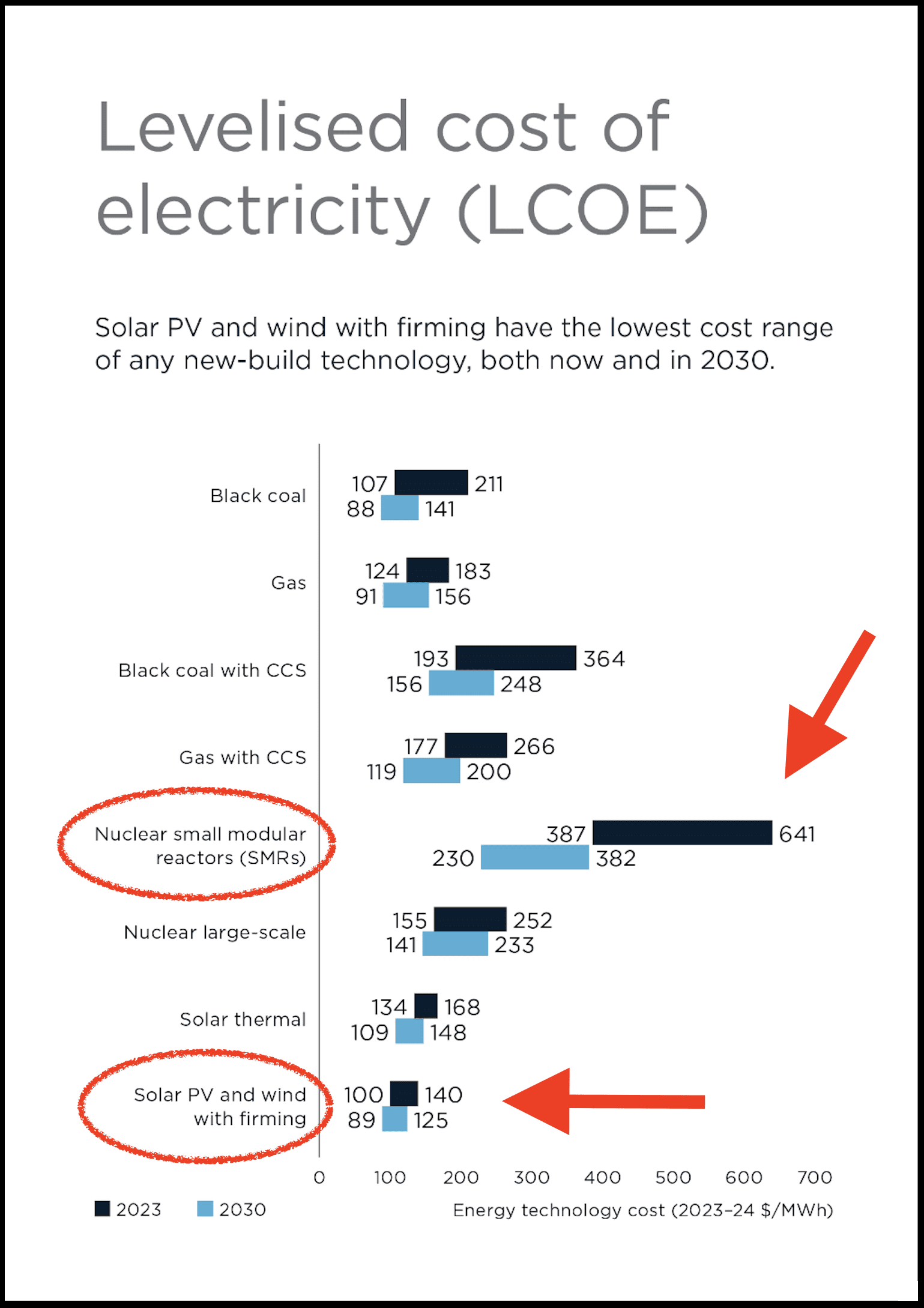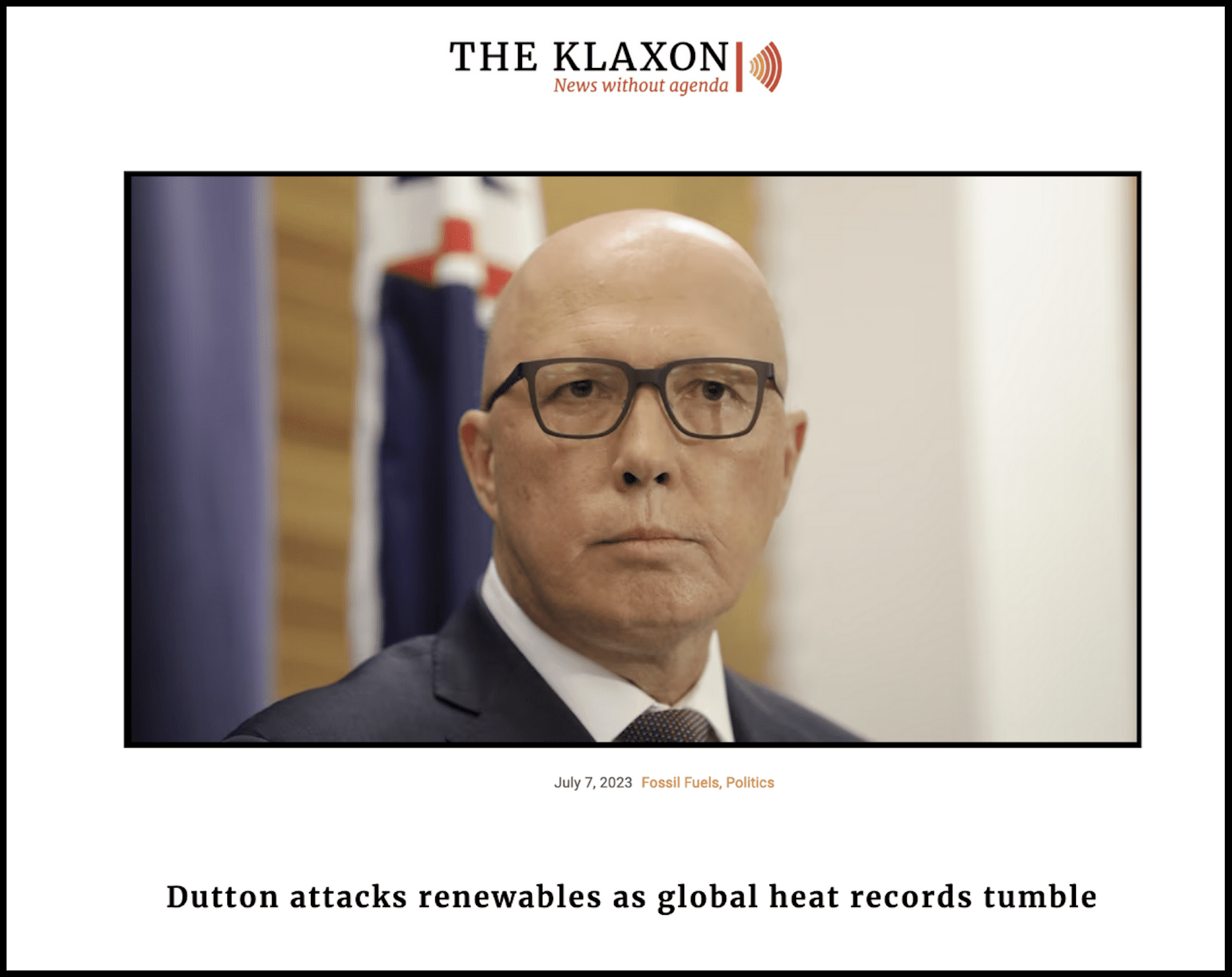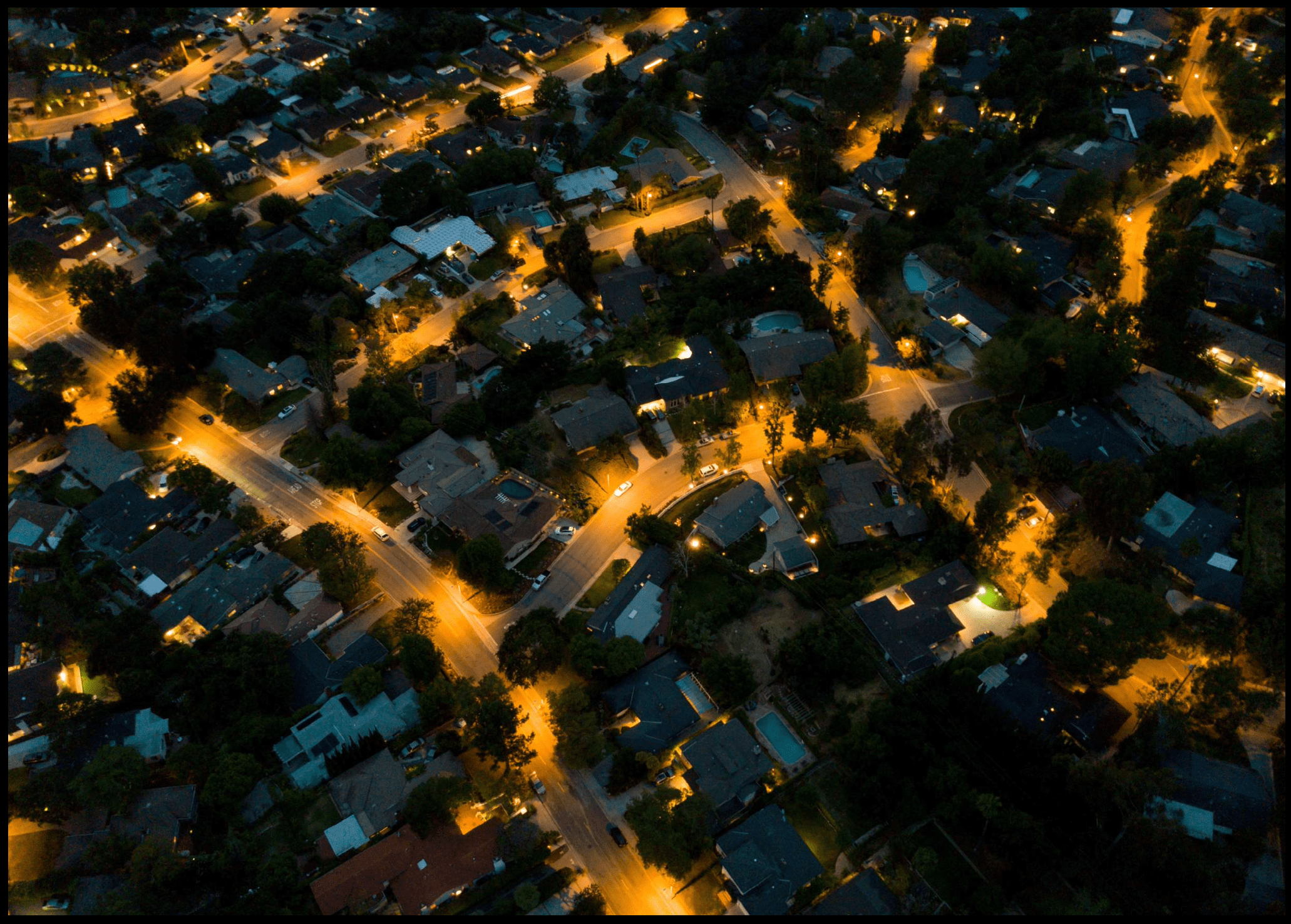SUPPORT
Small scale nuclear reactors — being heavily pushed by Peter Dutton’s Federal Coalition — cost over four times as much as solar and wind, even after accounting for “firming” the renewables, new analysis reveals.
The annual review of electricity costs by the CSIRO and Australian Energy Market Operator (AMEO) has found renewables are currently by far the cheapest “new build” technology, even cheaper than coal and gas — and before considering the environment.
The seventh annual GenCost report has found small modular nuclear reactors (SMR’s) currently cost around 4.3 times more than solar and wind.
That’s after including the “firming” costs of storage and transmission of the renewables, including when there is no sun or wind, which the report has included for the first time.
“Solar PV and wind with firming have the lowest cost range of any new-build technology, both now and in 2030,” the report states.
The costs of SMR’s would fall by 2030, but they would still cost almost three times more than solar and wind, whose costs would also fall in that period.
The GenCost report, which “represents Australia’s most comprehensive electricity generation cost projection” and is updated annually, has also for the first time included large-scale nuclear.
It’s found large-scale nuclear power plants cost 1.7 times firmed solar and wind, increasing to 1.75 times by 2030.
Regardless, the “earliest deployment” of either SMR’s or large-scale nuclear plants in Australia would be 2040, as such the nuclear cost comparisons had been provided “only as a point of interest”.
“The inclusion of large-scale and SMR nuclear…is only as a point of interest rather than a practicality” — CSIRO & AMEO
“For clarity, neither type of nuclear generation can be operational by 2030,” the report states.
Support our quality journalism by CLICKING HERE
 Nuclear SMR’s over four times the price of solar and wind renewables. Source: GenCost report, CSIRO & AMEAO
Nuclear SMR’s over four times the price of solar and wind renewables. Source: GenCost report, CSIRO & AMEAO
Developers would need to purchase the nuclear technology “in the 2030s”, “sometime after an expected 11 years of pre-construction tasks are completed”, followed by “4 to 6 years of construction”.
“As such, the inclusion of large-scale and SMR nuclear in the 2030 cost comparison is only a point of interest rather than practicality,” the report states.
SMR costs have been included in all GenCost reports since 2018, but large-scale nuclear has been added this year following widespread requests.
The CSIRO and AMEO had received “the highest volume of feedback to the consultation draft in its history”, with the “majority of submissions” requesting the “inclusion of large-scale nuclear”, the report states.
The findings present a massive blow for Dutton, who is heavily pushing nuclear technology against renewables as part of the Coalition’s platform to contest next year’s federal election.
The fossil fuels sector — which makes major “donations” to Dutton’s Coalition, as well as to the ALP — has been heavily pushing nuclear technology, in moves experts say is to prolong the use of fossil fuels and so maximise profits.
In July last year — which was coincidentally the world’s hottest week on record — Dutton gave a speech organised by US-style lobby group the “Institute of Public Affairs” spruiking SMR’s and attacking renewables.
He accused the ALP Government of “renewable zealotry” which was “putting our nation at risk”.
“The only feasible and proven technology which can firm up renewables and help us achieve the goals of clean, cost-effective and consistent power is next-generation nuclear technologies,” Dutton said.
“Namely, small modular reactors, or SMR’s”.
 The Opposition leader is tying his political fortunes to nuclear against renewables. Source: The Klaxon
The Opposition leader is tying his political fortunes to nuclear against renewables. Source: The Klaxon
In comparing costs, the GenCost report uses the “levelised cost of electricity” (LCOE) which is the “total unit cost a generator must recover over its economic life to meet all its costs including a return on investment”.
It provides a cost range, the minimum and maximum expected cost, for each energy provided by each technology.
In 2023 the cost of new-build, firmed solar and wind is between $100 a megawatt hour (MWh) and $140/MWh, averaging $120/MWh.
The 2023 “cost” of SMR’s (although they wouldn’t be operational until at least 2040) is between $387/MWh and $641/MWh, averaging $514/MWh — or 4.3 times that of firmed wind and solar.
The 2030 cost of new-build, firmed solar and wind is estimated at between $89/MWh and $125/MWh, averaging $107/MWh.
The 2030 “cost” of SMR’s is estimated at between $230/MWh and $382/MWh, averaging $306/MWh — or 2.9 times that of firmed wind and solar in 2030.
The average forecast “cost” of new-build large-scale nuclear in 2023 is $203.5/MWh — 1.7 times more than firmed wind and solar — while the 2030 “cost” of large-scale nuclear averages $187/MWh, 1.75 times more than the 2030 cost of firmed wind and solar.
The nuclear costs are likely underestimated because they do not include “first-of-a-kind” (FOAK) premiums and assume Australia undertaking a “continuous building program”.
The report says FOAK premiums apply to all new technologies — and so they would apply to both the first SMR and the first large-scale reactor built — but do not apply to solar and wind because both already exist in Australia, and at scale.
“FOAK premiums of up to 100% cannot be ruled out,” the report states.
“On top of the nuclear costs would be ‘first-of-a-kind’ premiums” — CSIRO & AMEO
The nuclear costs were also based on a “continuous building program” like South Korea.
“The lowest costs occur in countries such as South Korea which has delivered a continuous building program for many years and costs are generally higher in western countries which have tended to have more sporadic building programs,” the report states.
“Western countries…have tended to have more sporadic building programs” — CSIRO & AMEO
The 2023 cost of new-build “black coal” energy (black coal is more economical than “brown coal”) is between $107/MWh and $211/MWh, averaging $159/MWh — which is 75% more than firmed wind and solar.
The 2030 cost of new build black coal averages $114.5/MWh — which is 7 per cent more than firmed wind and solar in 2030.
The 2023 cost of new build gas averages $153.5/MWh — which is 28% more than firmed wind and solar — and the 2030 cost of gas averages $123.5/MWh, which is 15% more than firmed wind and solar in 2030.
Those costs do not include the environmental costs of coal and gas.
The Albanese Government has set a target of reducing greenhouse gas emissions to 43 per cent of 2005 levels by 2030, and achieving net zero emissions by 2050.
DON’T CLICK AWAY: Truly independent, quality journalism is vital to our democracy. Please SUPPORT US HERE.
Help us get the truth out from as little as $10/month.
Unleash the excitement of playing your favorite casino games from the comfort of your own home or on the go. With real money online casinos in South Africa, the possibilities are endless. Whether you’re into classic slots, progressive jackpots, or live dealer games, you’ll find it all at your fingertips. Join the millions of players enjoying the thrill of real money gambling and see if today is your lucky day!
The need for fearless, independent media has never been greater. Journalism is on its knees – and the media landscape is riddled with vested interests. Please consider subscribing for as little as $10 a month to help us keep holding the powerful to account.







